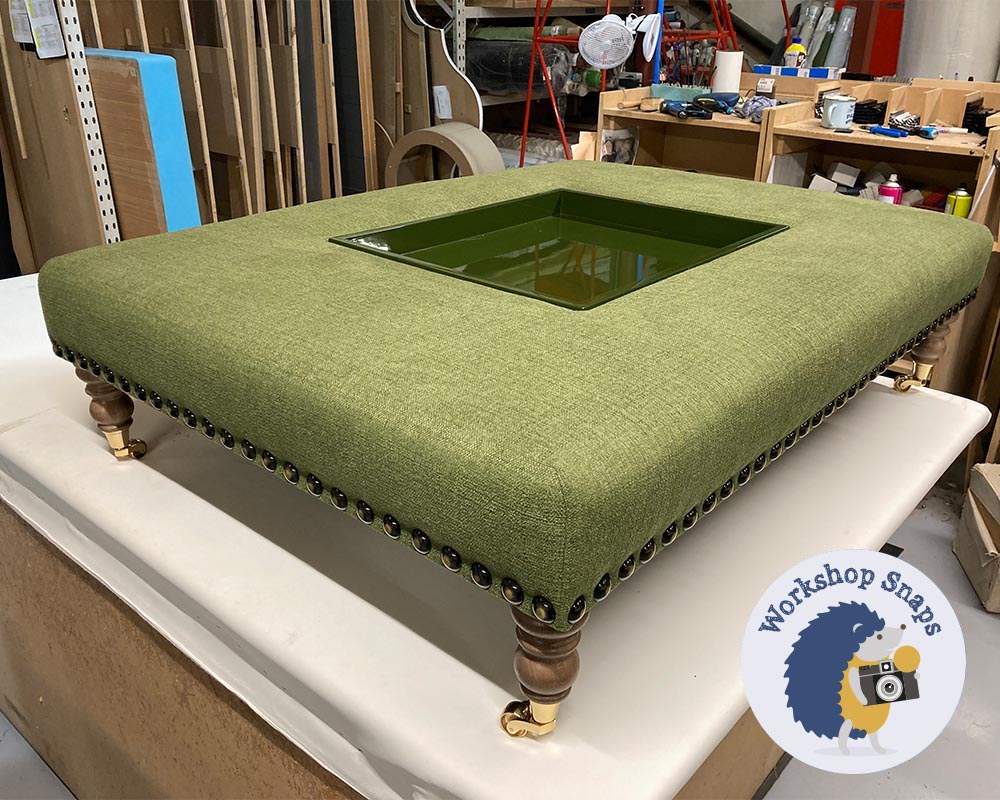This is the great furniture identity debate. Is it called a footstool or is it called an ottoman? Where you are based and what you know about the origins of this sitting room staple will influence what you call it. However, we attempt a deep dive into the possible terminology of the Ottoman Footstool …. giving insight into the age old question – is a low, upholstered fabric coffee table on legs a footstool, or an ottoman?
The truth is, both are correct. And, if like many, you’re using the term ottoman to describe a footstool you certainly are not wrong. However, you could be in a slightly grey area. Here’s our tips on how to easily navigate upholstery’s most notorious ‘Bermuda Triangle’.
In the UK, buttoned or plain topped upholstered rectangles without storage on legs are generally known as footstools.
However, the real meaning of the term ottoman (named for its originating country) can be found throughout history, starting in Turkey – previously known as the Ottoman Empire. A low, upholstered bench or platform was used in the family room for sitting, adorned with cushions and bolsters. And they were HUGE! Often spanning 3 sides of a room as a corner sectional. Those stylish and, quite frankly, trend setting Ottomans introduced their fancy take of family furniture to Europe in the 18th century.

Image source: https://www.ottomanhistorypodcast.com/2019/06/goodpoets.html – An example of traditional seating used in the Ottoman Empire.
Not to be left behind in the interior fashion stakes, Europeans added their own flair to the traditional ottoman footstools of the now Turkish, by adding seat dividers, arms or reducing the size somewhat to fit the average home. Sometimes storage was added by means of a hinged lid. Therefore, some traditional Turkish ottomans took on the form of a sofa, and some became todays more recognisable household staple – the humble yet incredibly practical, blanket box.
Those that fell into neither category became widely known as footstools across the continent. The larger of them used as fireside rests, the smallest becoming a traditional accompaniment to your favourite armchair. The crafty amongst our ancestors added carpet, beads and embroidery to their footstools in order to stamp their own mark to the design and some changed the shape to incorporate round, oval and even hexagon versions of the same.

Georgian Sitting Room with Circular Ottoman Footstool. Source: The Telegraph.
Given the footstool’s roots in the ottoman empire, by the 20th century, the term ‘ottoman’ had, rather misleadingly, encompassed all forms of low, padded seating on legs, with or without storage.
Without storage, the UK adopted the term footstool. Furthermore, regional colloquialisms then emerged such as pouffe and notably, in Shropshire, the Tumpty!
To further add to the debate, modern interiors often refer to a footstool ottoman as an upholstered coffee table. Rarely used for resting feet; the role of larger footrests today is to provide extra seating and a place to display décor items or to rest a tray (such is the trend), developing an entirely new category of furniture in their own right it seems.
Perhaps then, to cover the many variations and hybrid designs available, the term ‘Ottoman Footstool’ is the way to go whilst taking a leaf from our Victorian predecessors by customising your ottoman footstool to suit your own lifestyle.
Whatever you choose to call this item of furniture, you can be assured that The Footstool Workshop has all bases covered enabling you to design a bespoke and unique, fashionable piece with a nod to its historical importance, designed for the modern age.









